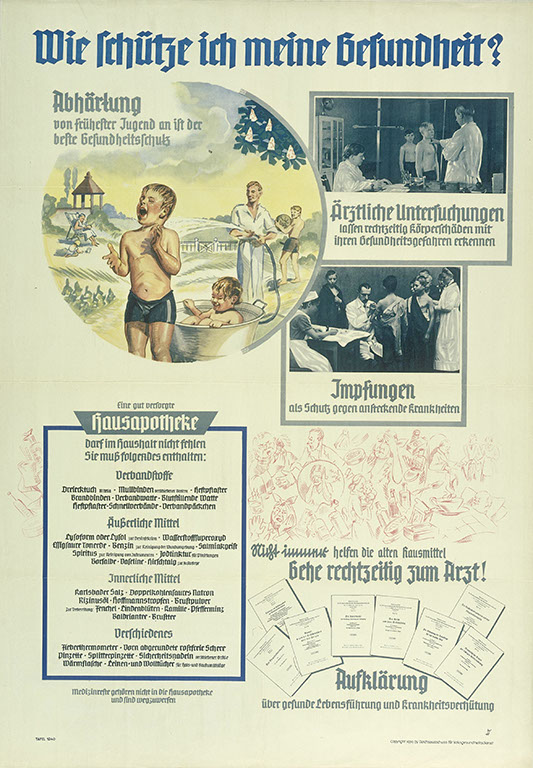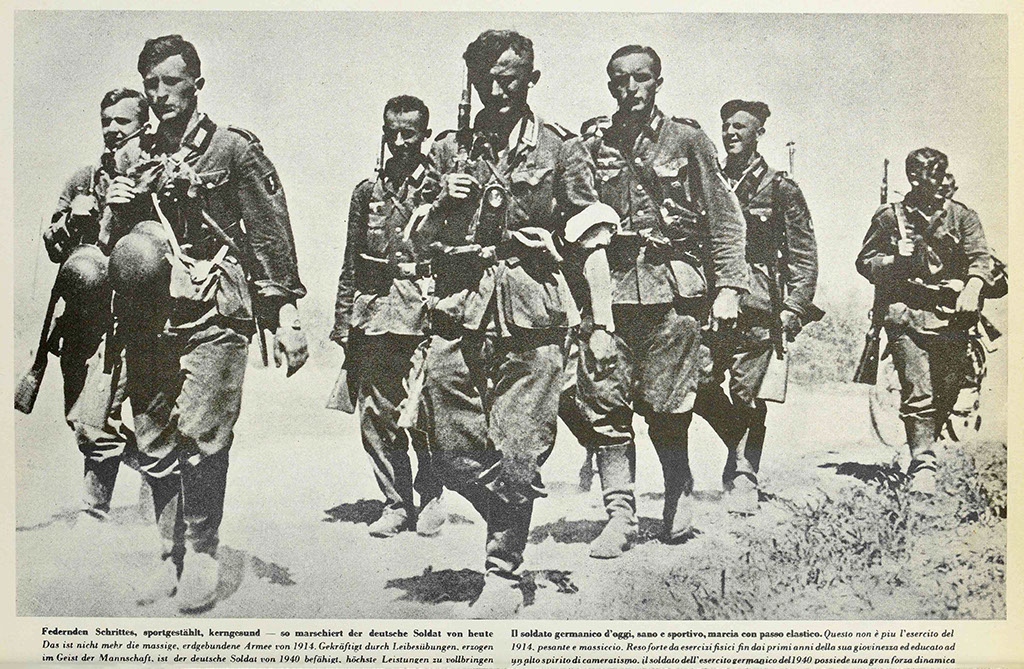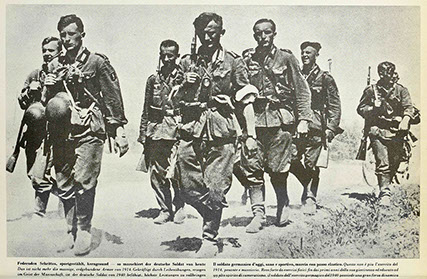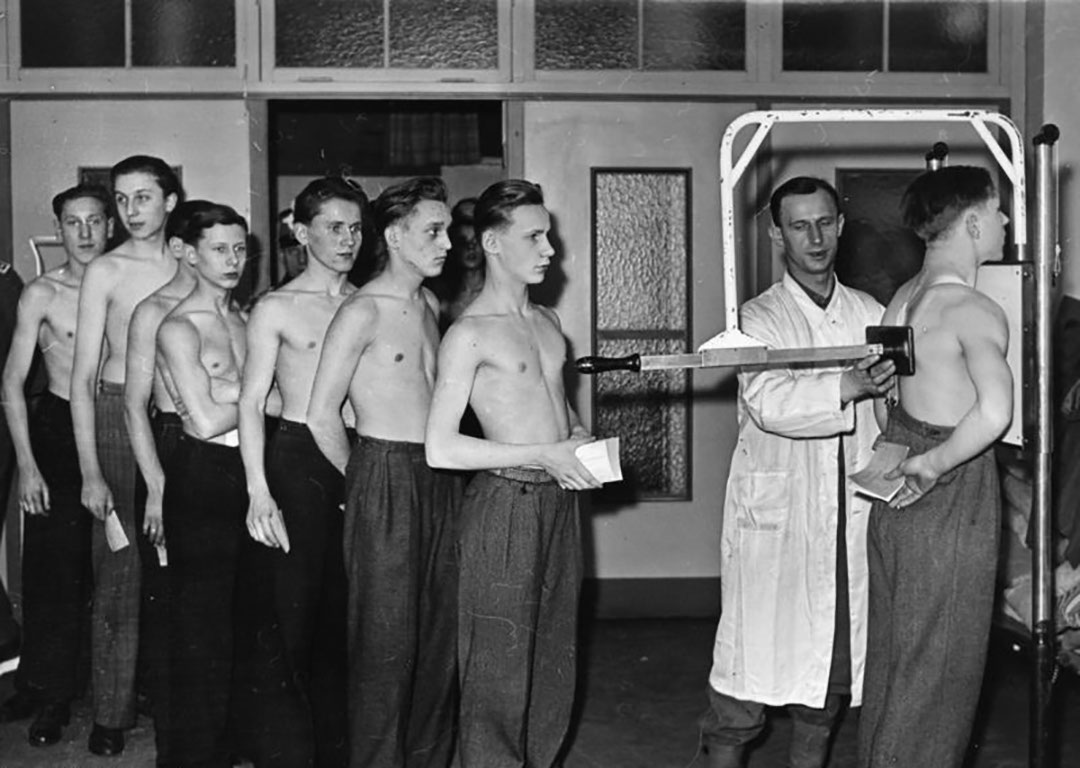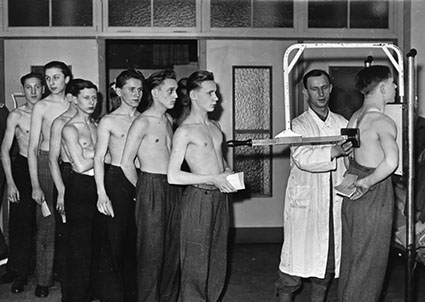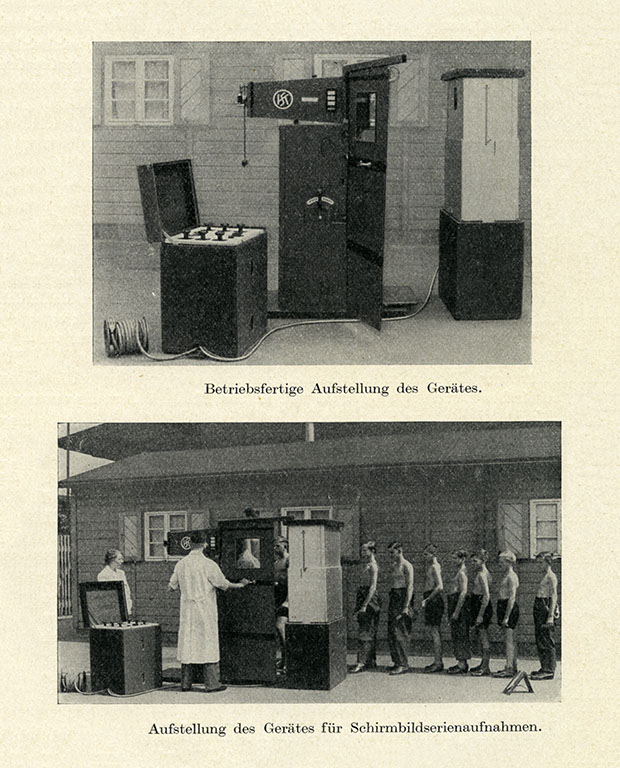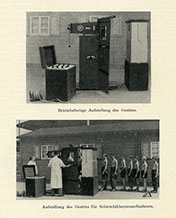
National Health
Pulmonary tuberculosis was a major issue in national health in the first half of the twentieth century. Tuberculosis was ranked second after cardiovascular diseases and before cancer in statistics for the causes of death in the mid-1930s. A large overall number of infected patients, the ‘creeping’ progression of the illness, and the costs – which often included years of treatment at sanatoria and long periods of inability to work – all meant that physicians and health ministers feared tuberculosis. For these reasons, state and municipal medical authorities kept a close eye on the spread of infections and diseases. Data related to tuberculosis was supposed to be collected and scientifically evaluated in order to improve the efficacy of preventive measures.
Tuberculosis was thought to damage the “body of the nation” in two ways – first, by reducing the current population’s ability to perform and reproduce; second, by virtue of its status as a “deadly poison,” it was thought to corrupt the quality of genetic constitutions and thereby impoverish the future nation with poor hereditary endowment. Therefore, preventive measures occupied centre stage in the fight against tuberculosis.
Mass radiological screening of different populations and professional groups was among the most important measures that could serve to protect “national health” and physical performance. The mass production of newly developed X-ray imaging devices enabled the organisation and rationalisation of early detection of tuberculosis infections. Together with the access to the personnel resources of the several members of various National Socialist Party organisations, who were rigorously organised and working in a voluntary capacity, even a ‘total X-ray screening’ of the German population seemed to be a surmountable task.
The fight against tuberculosis in the National Socialist state also provided a profitable subject for German propaganda abroad. The high-circulation illustrated propaganda magazine “Signal,” which appeared in over twenty languages, printed a photo with the following title in September 1940: “A spring in their step, steeled by sport, fit as a fiddle – that’s how today’s German soldier marches.” The accompanying text referred explicitly to the successes in the fight against tuberculosis, which owed its efficacy to the small-format X-ray device developed by Prof. Holfelder.
How can I protect my health? (1939) (Federal Archives, Placard 003-015-054)
Wehrmacht soldiers: “A spring in their step, steeled by sport, fit as a fiddle – that’s how today’s German soldier marches” (in: Dollinger, Hans (ed.), Facsimile Querschnitt durch Signal, introduced by Willi A. Boelcke, Bern 1969, p. 36)
Evaluation of Hitler Youth, January 1944
(Federal Archives, Hoffmann, image 183-J08974-2)
Universal imaging device, according to Griesbach, from the firm Koch & Sterzel in Dresden. Setting up the device for mass imaging,
(in: Griesbach, Rolf:
Die Tuberkulosebekämpfung. Grundlagen und Wege zu einer einheitlichen und erfolgreichen Durchführung, Leipzig 1941, p. 198, Fig. 17)
Menu
Deutsche Röntgengesellschaft e.V. © 2018
| Impressum | Datenschutz
